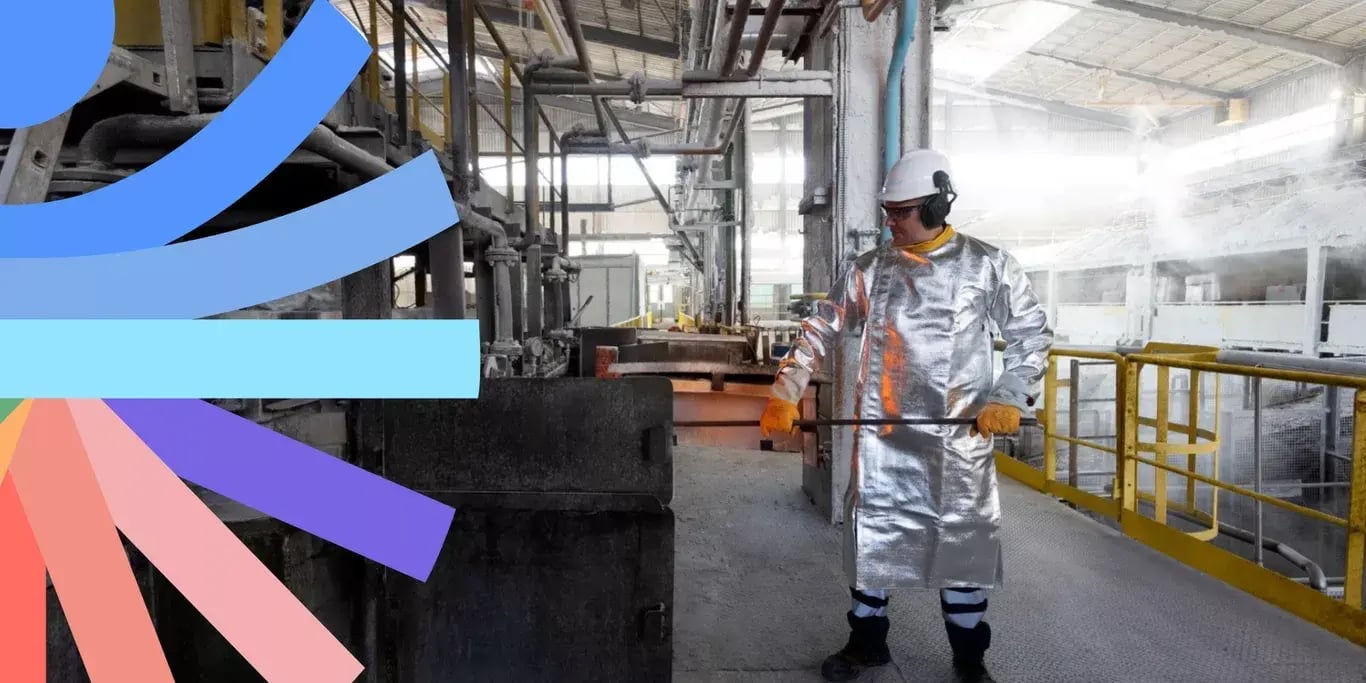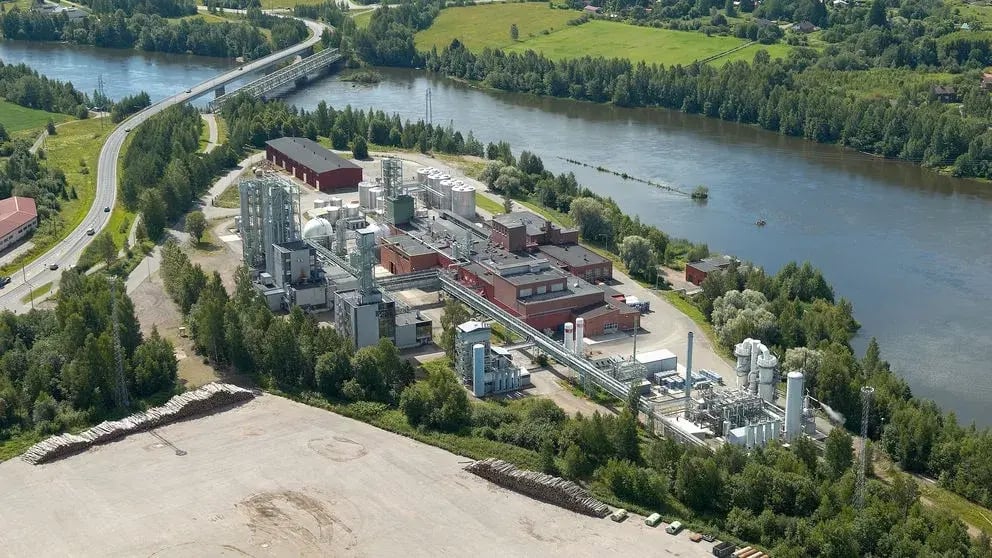
How Solvay Increased Customer Service Efficiency by 20%
The multinational chemicals leader transformed their Order-to-Cash process with QPR ProcessAnalyzer
Solvay discovered that 45% of customer orders required rework, slowing their Order-to-Cash process. Using QPR ProcessAnalyzer, they increased customer service efficiency by 20% and freed up time for commercial activities, creating an estimated 30% sales revenue growth opportunity.

The Challenge:
Despite having SAP as their operational backbone across 115 industrial sites in 61 countries, Solvay lacked visibility into their Order-to-Cash process. 45% of customer orders required rework due to issues like delayed confirmations, pricing errors, and delivery date changes, creating inefficiencies and poor customer experiences.
The Solution:
QPR ProcessAnalyzer analyzed Solvay's SAP data to map their actual Order-to-Cash process, create a "Happy Flow" design model, and implement conformance analysis to identify deviations and improvement opportunities.
The Results:
Increase in customer service efficiency
Estimated sales revenue growth potential in certain teams
Of orders had rework issues identified and addressed
Reduction in lead times for non-conformant casesservice efficiency
"Process mining with QPR ProcessAnalyzer transforms raw data into actionable and valuable information from the very first second."
Alexis Papageorges
Global Supply Chain Excellence Manager at Solvay
About Solvay
Solvay is a global leader in materials, chemicals, and solutions with over 24,500 employees across 61 countries and 115 industrial sites. With €10.3 billion in net sales—50% generated by sustainable solutions—Solvay contributes to products we use daily, from planes and cars to batteries and medical devices, solving critical industrial, social, and environmental challenges.

The challenge
SAP visibility gaps prevented supply chain optimization across 115 global sites
Order-to-Cash process was a "black box" hiding critical inefficiencies
While SAP enabled Solvay to operate standardized processes across 115 industrial sites in 61 countries, they lacked visibility into day-to-day operations and employee experiences within the system. About 10% of their 24,500-person workforce—nearly 2,500 employees—had regular customer interactions, creating massive volumes of data in SAP without clear insights into process performance.
45% of customer orders required costly rework
Solvay's Order-to-Cash process suffered from multiple inefficiencies: order confirmations taking too long, sales orders requiring rework, late invoicing, changing delivery dates, and unreliable pricing master data. These issues slowed processing, increased costs, and frustrated customers expecting faster service.
No way to identify improvement priorities or measure impact
Without process visibility, Solvay couldn't distinguish between high-impact improvements and minor fixes. They needed fact-based analysis to identify unconscious opportunities, size and evaluate improvements, and prioritize initiatives that would deliver the greatest value.
The solution
Comprehensive Order-to-Cash analysis reveals the "Happy Flow" and conformance gaps
Analyzing the Order-to-Cash process
QPR ProcessAnalyzer connected directly to Solvay's SAP data using QPR Connectors. After building and confirming the process mining model with Solvay, the analysis began using QPR ProcessAnalyzer's extensive ready-made analyses and presets, making the analysis process straightforward for the customer.
Creating a Design Model representing the Happy Flow
The Happy Flow represents the best-case scenario for Solvay's Order-to-Cash process. Through analysis, QPR determined the as-is process (how things actually operate) and calculated the ideal Happy Flow path that minimizes delays and rework.

Performing Conformance Analysis
Conformance analysis identified deviations from the agreed Happy Process. The initial analysis revealed that 45% of Solvay's customer orders included some form of rework. QPR ProcessAnalyzer's built-in Conformance Checking dashboard made it simple for Solvay to identify quick improvement wins.

Creating process mining dashboards
Custom dashboards provide managers with real-time visibility into the entire process, including critical insights like:
- Cases in the non-happy path take double the time → opportunity to cut lead times
- Net price changes are the most common happy path violation → opportunity to reduce extra work
- Rework affects on-time delivery and creates operational costs → opportunity for cost savings
"Process mining gives us full visibility into the order handling process with lead times, bottlenecks, benchmarks by business areas, and root causes. Using this actionable information we have been able to design the ideal 'Happy Flow', identify internal and customer-related reasons for order changes, and reduce process lead times."
Alexis Papageorges
Global Supply Chain Excellence Manager at Solvay
The results
From efficiency gains to revenue growth: transforming customer service into a profit center
20% increase in customer service efficiency
QPR ProcessAnalyzer enabled Solvay's customer service representatives to work 20% more efficiently by eliminating process inefficiencies and providing clear visibility into order handling with lead times, bottlenecks, and root causes.
30% sales revenue growth potential unlocked
Rather than simply cutting costs, Solvay chose to reinvest the efficiency gains strategically. The time saved through process mining enabled customer service representatives to engage in commercial activities and add-on sales, creating an estimated 30% sales revenue increase opportunity in certain teams.
Process lead times cut in half for problematic cases
Cases that deviated from the "Happy Flow" previously took double the time to process. By identifying and addressing these conformance issues, Solvay significantly reduced lead times and improved customer satisfaction.
Fact-based improvement prioritization replaces guesswork
Solvay now uses process mining complementary to traditional brainstorming, with QPR ProcessAnalyzer providing fact-based analysis to identify opportunities while human insight adds the strategic perspective for mobilizing teams and driving change.
Continuous monitoring prevents future issues
Real-time dashboards and automated alerts enable process owners to monitor key processes continuously, getting warnings when something goes wrong and drilling down to root causes before issues impact customers.
Alexis Papageorges shares the transformation strategy
Watch Alexis Papageorges explain how Solvay transformed inefficient processes into revenue growth opportunities and achieved 20% efficiency gains through fact-based process improvement.
